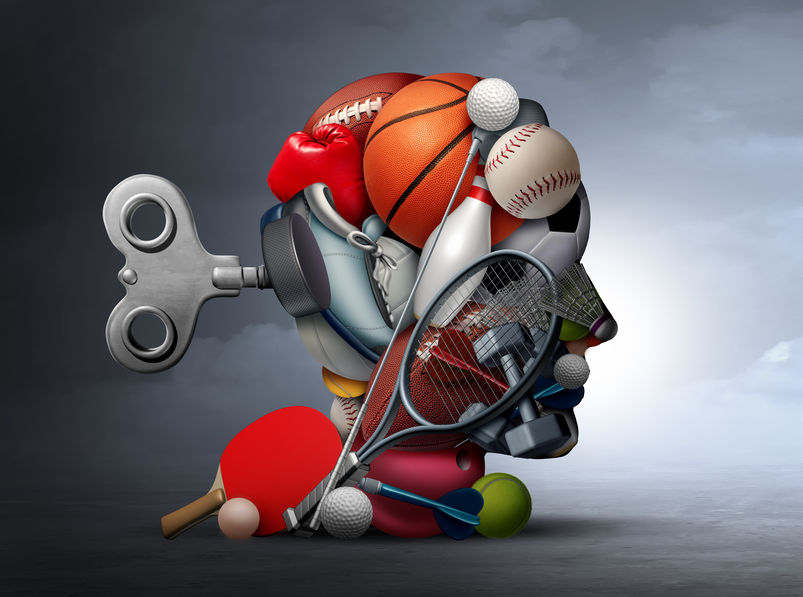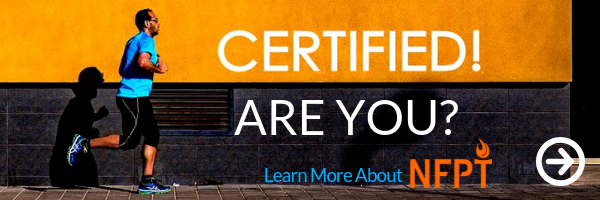We seldom question the physical benefits that exercise has on our bodies, but the benefits to the brain and higher functioning are not as regularly touted. How does being active and playing sports really impact the brain? Can someone improve “brain fitness”?
“No one would argue against the fact that sports lead to better physical fitness, but we don’t always think of brain fitness and sports,” said Professor Nina Kraus, director of the Auditory Neuroscience Laboratory at Northwestern University in Evanston, Illinois. “We’re saying that playing sports can tune the brain to better understand one’s sensory environment.”
Improve Performance with Quiet Eye
Imagine a basketball stadium crowded with rowdy fans, cheerleaders, coaches, and announcers, all anticipating a final “at-the-buzzer” basket. All eyes turn to the player…but where are his eyes? Most likely, he is laser-focused on the basket. His brain remains active throughout these final seconds, taking in data from all sources: the precise location of the basket, its distance, and all motion from the opposing players anxiously hoping for a miss.
Professionals who specialize in what is called “attention research” have coined the term quiet eye, referring to the hyper-focused milliseconds before, during, and after an action when the athlete absorbs and processes all of this key information by keeping eyes fixed on the most salient aspects of the goal.
Dr. Gershon Tenenbaum, Director of the Sports and Exercise Psychology Lab at Florida State University, explains that a quiet eye indicates a very busy brain, a direct link to positive performance. With the use of eye-tracking tools, his research team observed the gaze of a tennis player in the seconds before he returns a serve. Advanced players demonstrated extended periods of this quiet eye, and this always resulted in a better volley than what was observed with average players.
“We know that when quiet eye becomes longer, you have a greater chance to perform well. But you can’t concentrate forever, and in fact, concentrating too long can cause a deterioration in performance,” Tenenbaum explains. “So, what’s good? We’re trying to determine the optimal zone of the quiet eye for novice, intermediate, and expert players.”
This variety of brain fitness not only improves athleticism, but can certainly extend to other areas of life such as avoiding falls or accidents, quick reactivity in the face adversity, and even focus during personal training sessions.
Sound Filtering Forte
Professor Kraus and colleagues undertook the challenge of examining the brains of nearly 500 student athletes, both male and female. The study also included 493 control subjects. Their goal was to seek information regarding direct auditory responses in relation to background sounds. The methodology involved the delivery of “sound bytes” through earbuds while also recording data from strategically placed scalp electrodes.
The research demonstrated that serious and/or competitive athletes can filter out background sounds better than non-athletes or even novice sports enthusiasts. This enables them to hone in solely on sensory input that will improve their abilities.
Mysteries of the Midbrain
A group of colleagues at Northwestern University, led by Dr. Jennifer Krizman, tested whether athletic benefits extend beyond muscle and speed, and might include superior auditory processing. In this study, she assessed a parameter known as frequency-following response (FFR) by recording neural activity to complex sounds, stemming predominately from a specific portion of brain anatomy, the auditory midbrain.
The research project began with the premise that if FFR amplitude responds to enriching physical experiences in general, perhaps playing sports can lead to greater FFR amplitude. Results demonstrated a strong positive correlation, most likely hinging on the fact that athletes, especially those who engage in a competitive realm, possess a greater ability to quickly take in and decide on only important auditory stimuli and respond accordingly.
Train for the Brain Gain
Can such ability be acquired through proper training? This and many other theories comprise the extended reach of Dr. Tenenbaum’s lab. In addition to looking at athletic prowess, a great deal of their time is devoted to unraveling the mysteries of how information is actually accumulated and processed.
Nataniel Boiangin, Assistant Professor in the Sport, Exercise, and Performance Psychology Master’s program at Barry University in Miami, FL, also heads up their Sport & Exercise Psychology Laboratory. A recent study allowed him to explore the possibility of training athletes to improve split-second decision-making. To do so, he used stroboscopic eyeglasses that quickly alternate between opaque and clear, with the goal of creating limited or open fields of vision.
As previously discussed, a tennis player’s first priority in those crucial seconds before returning a serve include taking in and processing environmental cues. While inexperienced players’ eyes show a tendency to jump from the angle of an opponent’s wrist to his feet movement to trees swaying in a breeze, more seasoned athletes focus only on valuable patterns, without distraction from incidental details.
“Experts aren’t actively looking at each little cue. They’re able to chunk that information,” says Boiangin. The question he seeks to answer is whether training that includes limiting a player’s field of vision with such specialized eyeglasses might enable their brains to find and focus on appropriate visual cues.
Helping General and Special Populations Excel
How can the field of Sports Medicine extrapolate and capitalize upon this unique discovery? Some believe that participating in athletics may help patients with sensory processing challenges, such as individuals with language disorders. The medical community might also look at individuals who have suffered severe head trauma. Perhaps a deeper understanding of auditory processing could lead to improved treatments for head injury patients.
As for the majority of our clients, we can employ certain mindfulness techniques to facilitate the acquisition of greater concentration skills. Once innate, this can benefit competitive runners, powerlifters, and even seniors who must garner as much concentration as possible before attempting to climb stairs or even walk around the block without tripping. Given this unique power, the possibilities are endless.
References:
- nytimes.com/2019/12/18/well/move/sports-athletes-brain-hearing-noise-running.html?rref=well&module=Ribbon&version=context®ion=Header&action=click&contentCollection=Well&pgtype=Multimedia
- com/blog/2019/12/16/play-sports-smartly-for-a-quieter-brain-and-better-auditory-processing/
- sagepub.com/doi/abs/10.1177/1941738119892275?journalCode=spha&
- apa.org/monitor/2019/03/athletic-brain
- humankinetics.com/view/journals/jsep/40/2/article-p49.xml
- sciencedaily.com/releases/2019/12/191209080502.htm




